#Semantic Segmentation
Text
The Perks of Being Open-Source
As promised, here's something about the plug-ins for Stable Diffusion, the only AI image generator that's open-source, and makes for a great testbed for related research because of that.
The outcome of this research are various plug-ins and modifications that allow Stable Diffusion to do a lot of interesting things. And the authors? Hooboy, you would be surprised. It turns out that very serious companies, ones you would suspect of cooking their own tech of this kind on the side even if they haven't announced it publicly, build interesting things and share it for free.
Let's start with Semantic Segmentation. If an AI image generator makes images based on text input, Semantic Segmentation scans images, identifies elements and assigns text descriptions to them. A lot of serious companies have released open-source code of their implementation: you have Nvidia, Google, Meta and even Alibaba building that stuff. It might sound kinda underwhelming if fairly useful for helping visually impaired people (for example, Facebook uses it to generate alt texts for images posts automatically), but here's the kicker: Semantic Segmentation may be used in Stable Diffusion to automatically generate masks based on text description. Want to find a hand and redraw it to be more anatomically correct? Easy. How about changing the hair color without monkeying with it in Photoshop? Also easy. So easy that some basement-dwelling chud can script it to find the clothes on a woman and draw a nude body in their place (and did, and got himself in trouble when another teenage chud uploaded photos of girls from his class to the app).
Semantic Segmentation is the core of the popular Stable Diffusion extension called aDetailer: as I mentioned before, Semantic Segmentation can recognize what a hand is, even if it's distorted, and point the generator to inpaint a better version in its place. Same goes for the faces. And that's the two things aDetailer is built to fix.
Another thing are ControlNets: plugins that allow you to nudge the generation process a particular way, be it recreating the pose of a character down to hands and fingers (or just the face orientation and expression), following the outline of a sketch and filling in the details, even maintain perspective using depth maps. And then, based on that tech, you have PhotoMaker, created by Tencent's Applied Research Center, and its improved version, IP Adapter. The capabilities are impressive, particularly if you remember that a slightly outdated gaming PC can run Stable Diffusion at a decent pace with no need for an internet access, even with the plugins.
Also, with OpenAI's video generator Sora looming on the horizon, you should know that the first AI-generated (or at least redrawn) videos were created in Stable Diffusion as well. I don't intend to go down this rabbit hole for practical reasons (I have no need for using it for that particular purpose and my video card is a bit outdated), but it was on the sweaty basement-dwelling nerds to figure out how to fine-tune the whole thing to be consistent across a whole fuckton of frames, and they did it, the crazy sonsabitches.
So laugh all you want at the ornery, wobbly Stable Diffusion producing rounded, fractal blorps and fucky hands. Even basic capabilities like inpainting and outpainting still make Midjourney jealous, and if you look at the plugins, you can imagine a good few use cases you could never wring out of the competing algorithms - and run them on your own PC for free instead of relying on centralized black boxes with a monthly fee.
#mike's musings#AI image generation#Stable Diffusion#IP Adapter#ControlNet#Semantic Segmentation#SemSeg#tech#technology
0 notes
Text
What are Smart Cities?
As Internet-of-Things (IoT) technology has gone mainstream, you may have heard of the smart home, but have you heard of the smart city? If not, you may be hearing more about these soon as smart cities using computer vision AI and a large network of information and communications technologies (ICT) are becoming a reality.
In a smart home, networked automation devices like smart thermostats, automated lighting and smartphone-controlled door locks allow homeowners to keep tabs on everything going on in and around the home using computers and smart devices. In a smart city, the same concept applies, just on a massive scale.
Increasing Municipal Efficiency
One of the biggest goals of smart cities is to improve efficiency. When large numbers of people, vehicles, residences, stores and government offices are crammed into tight quarters, trying to keep the gears of a city running smoothly can be difficult. Government agencies tasked with carrying out official duties tend to have a harder time as city populations grow, but the smart cities concept can help.
Think about this: In a traditional city, traffic management is a big job. If roadwork needs to be completed, traffic needs to be diverted and traffic signal operations may need to be changed. In a smart city, computer vision AI can monitor areas where traffic has been diverted to intelligently change traffic signals to create more efficient traffic patterns. This reduces the labor required for city officials and can reduce accidents as well.
Reduced Crime is a Benefit
Smart cities may also be safer due to connected technologies. In a traditional city setting, a gunshot that goes off in the commission of a crime may go undetected by people outside the immediate vicinity of the shot.
In a smart city, audio sensors that are trained to listen for gunshots can immediately detect the sound of the shot and pinpoint its location by measuring the echoes off of nearby structures. Simultaneously, the sensor can send a recording of the shot along with a video of the area and a notification to the nearest available police unit. A faster response time leads to more bad guys behind bars and safer communities for all.
Read a similar article about annotation services for computer vision here at this page.
#video annotator#active learning machine learning#cvat#semantic segmentation#computer vision in government#computer vision ai#radiology annotation software
0 notes
Photo
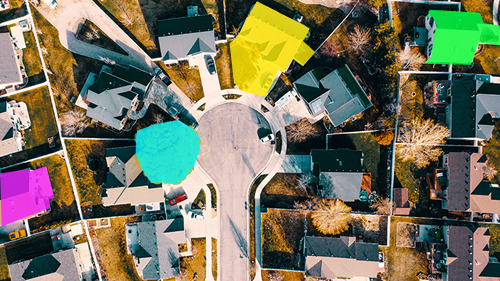
Exploring Image Analysis at the Pixel Level| Semantic Segmentation Services| NextWealth
NextWealth's Semantic Segmentation Services enable in-depth image analysis by providing pixel-level understanding, empowering accurate computer vision applications and unlocking valuable insights.
Read more :https://www.nextwealth.com/3d-semantic-segmentation-services/
0 notes
Photo

https://www.datalabeler.com/stronginterested-in-computer-vision-strongstrongdata-labeler-can-help-in-providing-real-time-intelligence-and-a-higher-roi-strong/
#Computer Vision Services#semantic segmentation#machine learning services company#Image Annotation Service#Data Annotation Services
0 notes
Text
#Outsource Image Recognition Services#Image recognition for computer vision technology refers to identifying objects and other attributes within an image. This helps in training#objects#and different variations in the pictures.#At Triyock BPO#we provide end-to-end image recognition services for your AI projects. Our team of AI experts and image annotators have rich experience and#Our Image Annotation Services Include:#2D Bounding Box Annotation#3D Bounding Boxes/ Cuboids Annotation#Online Image Annotation using Polygons#Semantic Segmentation#Image Classification#Lines and Splines Annotation#Landmark Annotation#Discuss Your Project With Us#Are you looking for a trusted outsourcing image annotation company for your image annotation needs? Contact us at [email protected] for our#Triyockbpo#bpo#outsourcingservices#bposolution
0 notes
Link
#Types of Semantic Segmentation#semantic segmentation#Semantic Segmentation Annotation#Video Semantic Segmentation Annotation
0 notes
Text

mfw drafting out an email response fully backed up by my coworkers after we get a salty response from somebody after we (I) ask them to clean up their models
#personal stuff#brooooooo i was so annoyed last week#we ask everybody to clean up their models b4 handing them off to us and like... if u work in webgl u have to DRASTICALLY make optimizations#your 23MB 600k poly/tri models are not optimized for a realtime rendered webgl build#they got all caught up semantics for 'correcting' my usage of the word 'subdivisions' instead of 'segments' about their models#and saying basically 'my models are perfect as is i will not make changes'#anyway :)#problem solved#lead dev who's been on more projects than me was like yeah ur assessment was correct#only time will tell if they get pissed at us or give in and go 'ok yeah we'll do that'
2 notes
·
View notes
Text
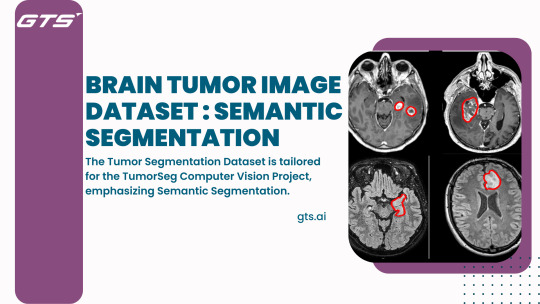
AI and healthcare seamlessly converge for the greater good. The journey has just begun, and with each pixel meticulously segmented, we step closer to a future where technology enhances, empowers, and saves lives.
#ai#data collection company#globose technology solutions#Brain Tumor Image DataSet : Semantic Segmentation
0 notes
Text
Medieval Scorpions Effortpost
So yesterday I reblogged this post featuring an 11th-century depiction of the Apocalypse Locusts from Revelations, noting the following incongruity as another medieval scorpion issue:
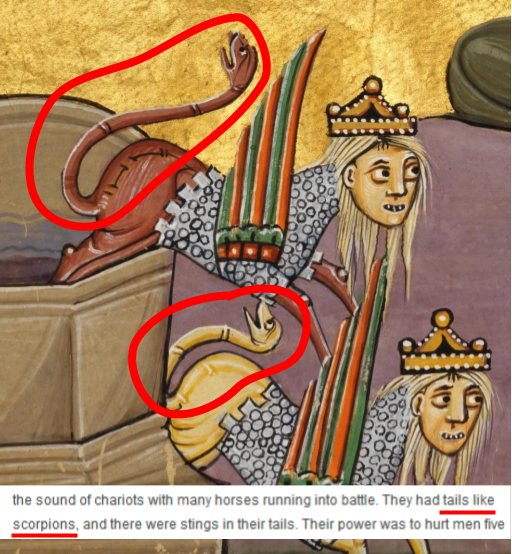
The artist, as you can see, has interpreted "tails like scorpions" as meaning "glue cheerful-looking snakes to their butts".
Anyway, it occurred to me that the medieval scorpion thing might not be as widely known as I think it is, and that Tumblr would probably enjoy knowing about it if it isn't known already. So, finding myself unable to focus on the research I'm supposed to be doing, I decided to write about this instead. I'll just go ahead and put a cut here.
As we can see in the image above, at least one artist out there thought a "scorpion" was a type of snake. Which makes it difficult to draw "tails like scorpions", because a snake's tail is not that distinctive or menacing (maybe rattlesnakes, but they don't have those outside the Americas). So they interpreted "tails like scorpions" as "the tail looks like a whole snake complete with head".
Let me tell you. This is not a problem unique to this illustration.
See, people throughout medieval Europe were aware of scorpions. As just alluded to, they are mentioned in the Bible, and if the people producing manuscripts in medieval Europe knew one thing, it was Stuff In Bible. They're also in the Zodiac, which medieval Europe had inherited through classical sources. However, let's take a look at this map:
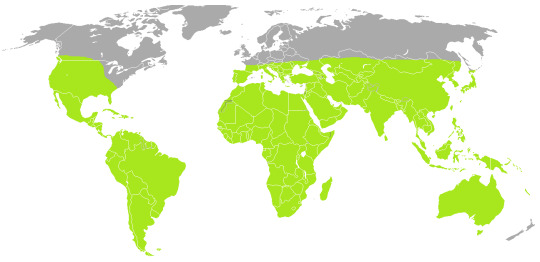
That's Wikipedia's map of the native range of the Scorpiones order, i.e., all scorpion species. You may notice something -- the range just stops at a certain northern latitude. Pretty much all of northern Europe is scorpion-free. If you lived in the north half of Europe, odds were good you had never seen a scorpion in your life. But if you were literate or educated at all, or you knew they were a thing, because you'd almost certainly run across them being mentioned in texts from farther south. And those texts wouldn't bother to explain what a scorpion was, of course -- everyone knows scorpions, right? When was the last time you stopped to explain What Is Spiders?
So medieval writers and artists in northern Europe were kind of stuck. There was all this scorpion imagery and metaphor in the texts they liked to work from, but they didn't really know what a scorpion was. Writers could kind of work around it (there's a lot of "oh, it's a venomous creature, moving on"), but sometimes they felt the need to break it down better. For this, of course, they'd have to refer to a bestiary -- but due to Bestiary Telephone and the persistent need of bestiary authors to turn animals into allegories, one of the only visual details you got on scorpions was that they... had a beautiful face, which they used to distract people in order to sting them.
And look. I'm not here to yuck anyone's yum, but I would say that a scorpion's face has significant aesthetic appeal only for a fairly small segment of the population. I'm sure you could get an entomologist to rhapsodize about it a bit, but your average person on the street will not be entranced by the face of a scorpion. So this did not help the medieval Europeans in figuring out how to depict scorpions. There was also some semantic confusion -- see, in some languages (such as Old and Middle English), "worm" could be a general term for very small animals of any kind. But it also could mean "serpent".* So there were some, like our artist at the top of the post, who were pretty sure a scorpion was a snake. This was probably helped along by the fact that "venomous" was one of the only things everyone knew about them, and hey, snakes are venomous. Also, Pliny the Elder had floated the idea that there were scorpions in Africa that could fly, and at least one author (13th-century monk Bartholomaeus Anglicus) therefore suggested that they had feathers. I don't see that last one coming up much, I just share it because it's funny to me.
*English eventually resolved this by borrowing the Latin vermin for very small animals, using the specialized spelling wyrm for big impressive mythical-type serpents, and sticking with the more specific snake for normal serpents.
Some authors, like the anonymous author of the Ancrene Wisse, therefore suggested that a scorpion was a snake with a woman's face and a stinging tail. (Everyone seemed to be on the same page with regards to the fact that the sting was in the tail, which is in fact probably the most recognizable aspect of scorpions, so good job there.) However, while authors could avoid this problem, visual artists could not. And if you were illustrating a bestiary or a calendar, including a scorpion was not optional. So they had to take a shot at what this thing looked like.
And so, after this way-too-long explanation, the thing you're probably here for: inaccurate medieval drawings of scorpions. (There are of course accurate medieval drawings of scorpions, from artists who lived in the southern part of Europe and/or visited places where scorpions lived; I'm just not showing you those.) And if you find yourself wondering, "how sure are you that that's meant to be a scorpion?" -- all of these are either from bestiaries or from calendars that include zodiac illustrations.
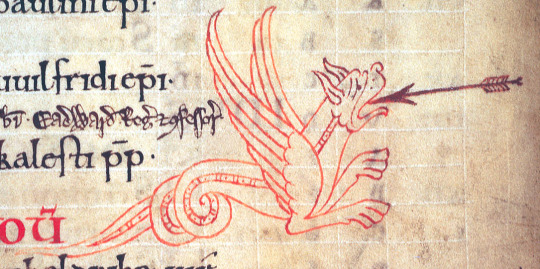
11th-century England, MS Arundel 60. (Be honest, without the rest of this post, if I had asked you to guess what animal this was supposed to be, would you have ever guessed “scorpion”?)
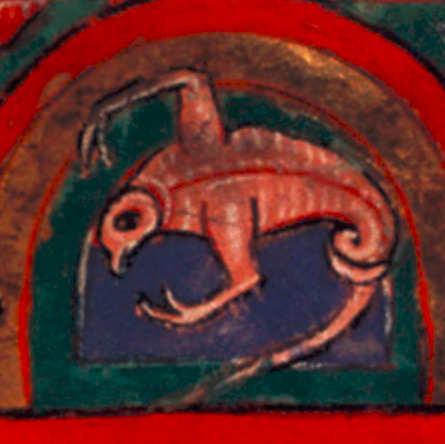
12th-century Germany, "Psalter of Henry the Lion". (Looks a bit undercooked. Kind of fetal.)
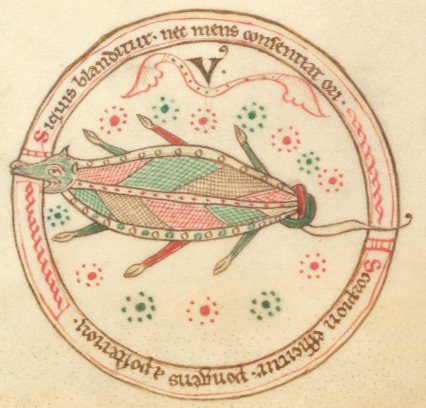
12th-century France, Peter Lombard's Sententiae. (Very colorful, itsy bitsy claws, what is happening with that tail?)
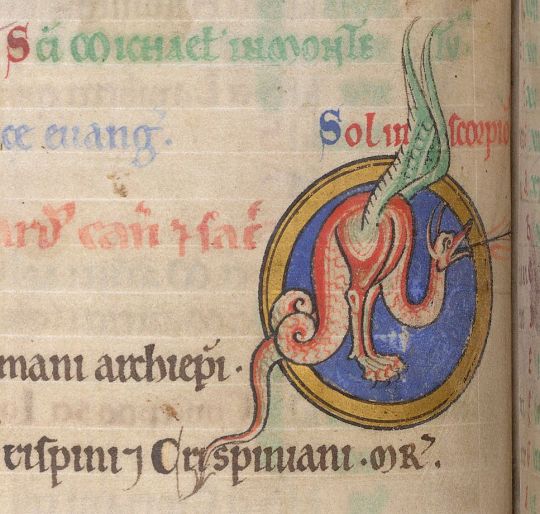
12th-century England, "The Shaftesbury Psalter". (So a scorpion is some sort of wyvern with a face like a duck, correct?)

13th-century France, Thomas de Cantimpré's Liber de natura rerum. (I’d give them credit for the silhouette not being that far off, but there’s a certain bestiary style where all the animals kind of look like that. Also note how few of these have claws.)
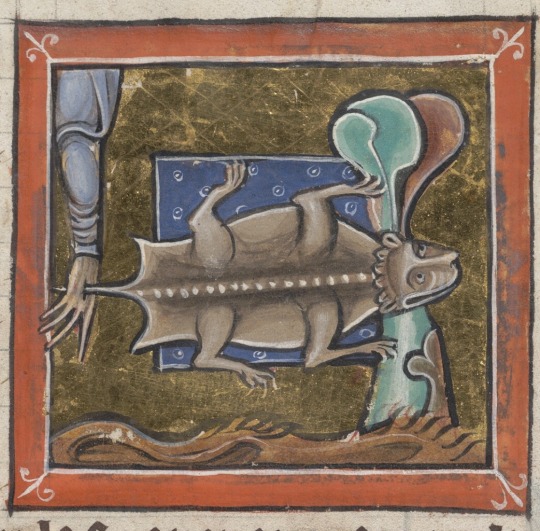
13th-century England, "The Bodley Bestiary". (Mischievous flying squirrel impales local man’s hand, local man fails to notice.)
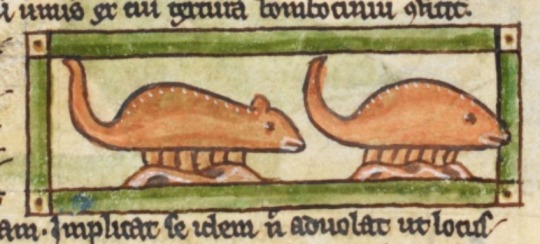
13th-century England, Harley MS 3244. (A scorpion is definitely either a mouse or a fish. Either way it has six legs.)
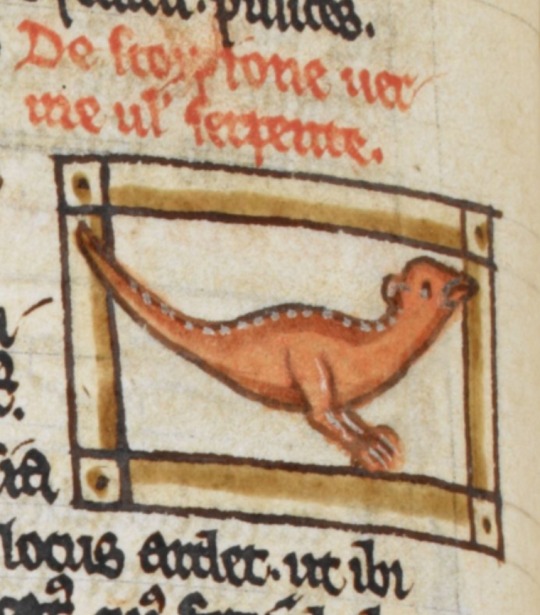
13th-century England, Harley MS 3244. (Wait, no, it’s a baby theropod, and it has two legs. (Yes, this is the same manuscript, that’s not an error, this artist did four scorpions and no two are the same.))

13th-century England, Harley MS 3244. (Actually it’s a lizard with tiny ears and it has four legs.)

13th-century England, Harley MS 3244. (Now that we’re at the big fancy illustration, I think I’ve got it — it’s like that last one, but two legs, longer ears, and a less goofy face. Also I’ve decided it’s not pink anymore, I think that was the main problem.)

13th-century England, MS Kk.4.25. (A scorpion is a flat crocodile with a bear’s head.)
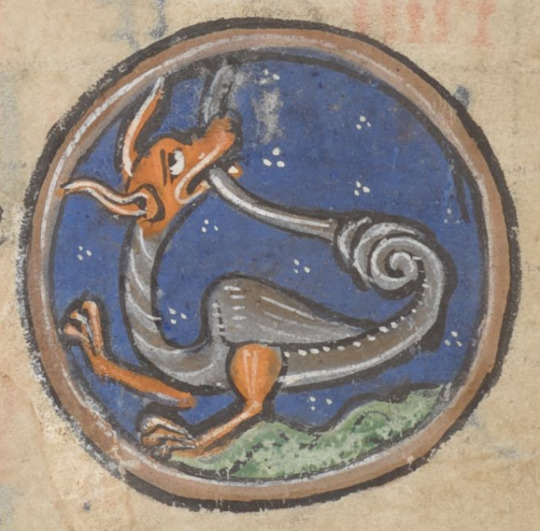
13th-century England, "The Huth Psalter". (Wyvern but baby! Does not seem to be enjoying biting its own tail.)
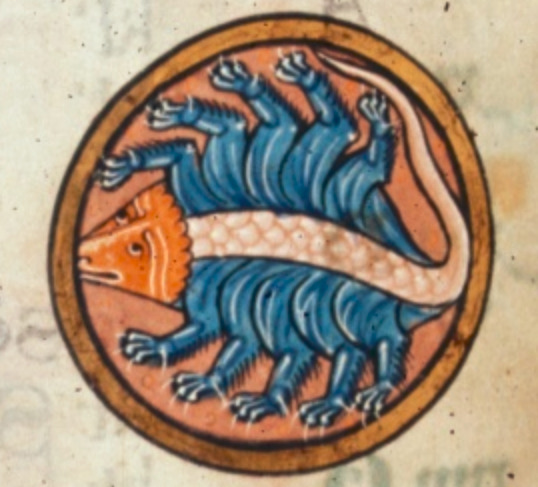
13th-century England, MS Royal 1 D X. (This triangular-headed gentlecreature gets the award for “closest guess at correct limb configuration”. If two of those were claws, I might actually believe this artist had seen a scorpion before, or at least a picture of one.)

13th-century England, "The Westminster Psalter". (A scorpion is the offspring of a wyvern and a fawn.)
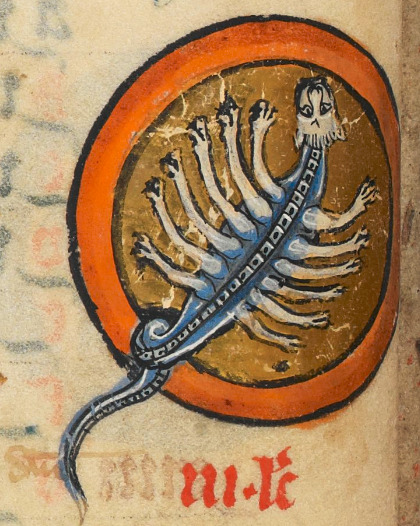
13th-century England, "The Rutland Psalter". (Too many legs! Pull back! Pull back!)

13th or 14th-century France, Bestiaire d'amour rimé. (This is very similar to the fawn-wyvern, but putting it in an actual Scene makes it even more obvious that you’re just guessing.)
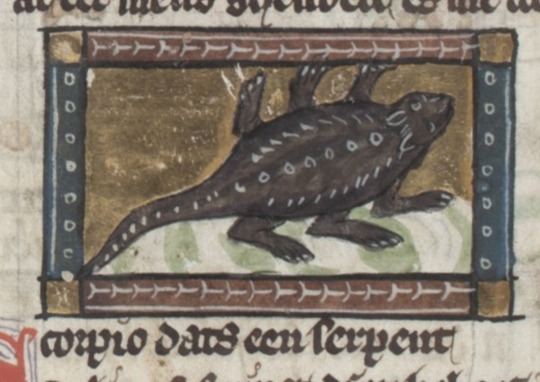
14th-century Netherlands, Jacob van Maerlant's Der Naturen Bloeme. (More top-down six-legged guys that look too furry to be arthropods.)

14th-century Germany, MS Additional 22413. (That is clearly a turtle.)

14th-century France, Matfres Eymengau de Beziers's Breviari d'amor. (Who came up with that head shape and what was their deal?)
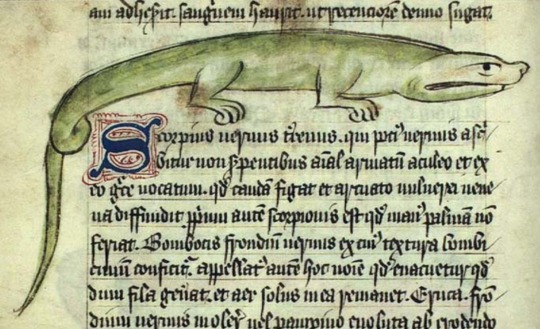
15th-century England, "Bestiary of Ann Walsh". (Screw it, a scorpion is a big lizard that glares at you for trying to make me draw things I don’t know about.)
I've spent way too much time on this now. End of post, thank you to anyone who got all the way down here.
#medieval#medieval creatures#medieval art#scorpions#medieval scorpions#manuscript#medieval manuscripts#illuminated manuscript
6K notes
·
View notes
Text
We all can understand that Esperanto's system of using word-final vowels to denote word classes is not especially naturalistic and frankly is pretty clunky in many regards. However, there do appear to exist languages in numerous places around the world which exhibit some segmental correlates of word-class. Here's a list of those that I'm aware of off the top of my head.
Yoruba (and I'm guessing this is true of Kwa more broadly) appears to overwhelmingly have vowel-initial nouns in native vocabulary. This seems to tie in with a trend towards deriving nouns from consonant-initial verb roots using V-prefixes, as well as perhaps being a relic of a previous noun class system (more on that below).
Salishan languages (outside of Bella Coola) generally show an s- prefix, even on seeming root nouns, in part doubtless to do with it being a nominalising prefix and thus kinda essential in an omnipredicative language.
A number of Oceanic languages, mostly in Melanesia, have either vowel-initial or n-initial nouns from univerbation of one of the Proto-Oceanic articles (*qV and *na respectively). Often the distribution seems to fall along semantic lines, with *qi for humans and proper nouns and *na everything else, though some languages divide it differently, e.g. Torres-Banks, where *na has specifically ended up as an inalienable marker, though there it is still kind of an article. Notably, even in languages where this correlation does not hold for the majority of nouns, some 'article accretion' as François terms it often still occurs
Moskona, in a curious parallel to the Oceanic system, has native alienable nouns begin with m- and inalienable ones with a vowel, or rather the root begins with vowel to which possessor prefixes are added. No clues as to the etymology.
To this we might add systems where noun class also plays a role. For instance, in Berber languages masculine nouns seem to usually begin with a vowel, with a t-...-t circumfix for feminines, e.g. Amazigh 'Berber people' → Tamazight 'Berber language' (though for non-Tuareg varieties I think vowel syncope obscures this a little?). Similarly, some Bantu noun-class systems such as those of isiZulu have a vocalic 'augment' to their noun class prefixes which is basically an echo vowel of the prefix, which I suspect is related to what's going on in Yoruba, especially if Niger-Congo is a thing.
Any other examples you're aware of feel free to add, as I'm wondering if this might be a good thing to do a paper on sometime.
29 notes
·
View notes
Text
CosmicLuve.com December 2023 - Deer
Necessary prerequisite posts:
108 The Story of Discovering Earth’s Consciousness (book)
Sentientism 2022
Cosmic Love Feb 2020 - Emma Watson
Cosmic Love April 2022: Cary Charlotte or Mary
Cosmic Luve July 2023 - The Main Thing
Cosmic Luve Aug 2023 - Orange
Cosmic Luve Sept 2023 - Bam
Cosmic Luve November 2023 - Cosmic Bros
youtube
This post’s intro builds off the semantics from the cosmic luve entries “Bam” and “Cosmic Bros” but the semantics for this month are all new, and all surround Emma Watson (again). I keep up this blog to show how semantic coincidences I see as meaningful could be a communication from Gaia, which is another name for the Earth’s conscious and godly spirit.
The basic theory is that Gaia can communicate through telepathic randonauting and “points of realization.” In other words, it’s thought that the Earth is conscious due to it’s magnetism that gives her the ability to read your thoughts and highlight cognition which affects your behavior. It’s postulated that Gaia would manifest her communications through signals of loving intent especially between romantic partners. She would basically have to use humans and animals as a canvas to paint her communication over the collective ethos which would manifest by groups of individuals acting out their (gaia) affected cognition.
The basis of this is described in my book “108 The Story of Discovering Earth’s Consciousness” which breaks down the science and evidence behind my reasoning and why I came to this conclusion. In the sentientism posts on the blog I take the science and knowledge of this a step further into the belief that Gaia is already conscious and communicating and ask: “What would that look like?” Then, this cosmic luve log is my attempt at showing you all that from my experience and how the voice in my head predicts the future and manipulates my environment in the ways aforementioned.
Where we Left off

I guess I should have waited longer to publish the last post because a couple new semantics popped up that day that directly related to the main theme of the last post. I’ve seen the video of Pattie Gonia holding up the signs of exposing Big Oil Tycoons as criminals before… but I forgot to log it. I made a tweet about it and about how I came across it on the day I published the November 2023 post and (eventually) apologized to Gaia for missing her communication. The next day, Philip DeFranco did another segment on the protests of Just Stop Oil.
New Coincidences
youtube
It all started December 9th, 2023 when I went to Three Rivers to see a friend and shoot three one-take music videos on the train tracks. They are posted and include “Yeah We Bang” “I Got You” and “Paliperidone” which is embedded above. In the December 10th Sunday update I talked about Emma Watson as a dear. Quick explanation, there was a deer that stopped in the middle of the train tracks while I was filming the second video which was “Paliperidone.” This is cosmic luve because right as I’m filming the deer I say “Gaia’s force,” then a little later I say “here’s the tale” as the deer runs away showing it’s tail, and (at the time) Emma’s Instagram profile picture was the mother deer from Bambi.
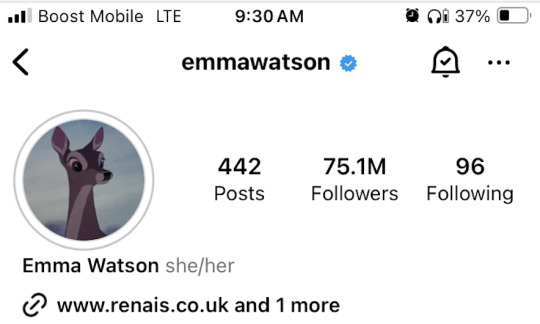
In the December 10th Sunday update I also talk about how “in twilight while taking a nap during the day the other day and Gaia said to make a (mystical) tree an anchor that she could build upon so I tweeted it to make it official.” Here is the tweet about the tree. I mentioned how “I made a tweet back on October 1st about how I would get $500 from my music “in the next 100 days”. Well I got the $500 but it didn’t come from music. It was access money I had basically.” Here is the tweet I made on October 1st. I also logged in the update that Gaia said I would meet Hailee Steinfeld in two years.

On December 11th I uploaded the Paliperidone One Take music video to Youtube. On the night of December 12th, Jimmy Fallon revealed the 9th box ‘til Christmas day’ sweater and it was a deer. Also on the night of December 12th Taraji P Henson was on Steven Colbert promoting the movie she was in which was “The Color Purple.” In the interview Taraji talk about how they shot the movie around a big oak tree (recalling what Gaia told me in twilight). The movie clip in the show is about recognizing god’s love.

On October 13 “Cosmic live brownies” dropped. I made a couple posts asking my ig audience why Emma Watson's profile picture is the deer from Bambi. On December 14 Emma changed her profile picture to a British vogue shot and lil dicky dropped mr McAdams the same day. Do you think this is Gaia making fun of me using Emma as a vessel? I think she is. On that day I also thought about the song “Do-Re-Me” from Sound of Music which I think relates especially with Emma being tied to the sun poem. That night Oprah made an appearance on Stephen Colbert wearing all purple.
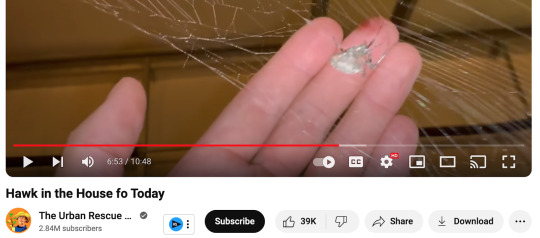
On December 15th Gaia compelled me to make the tweet saying “Gaia says “you’ll hand a girlfriend in three weeks.”” I still don’t know what that’s about, we’ll see… On December 18th the Urban Rescue Ranch talks about “charlottes web” at 6:50 and how the spider is protecting Patrick, who I think is a type of African or Australian deer, from flies. I just want to say, this is how Emma’s cat semantics developed that I talk about in the book, the difference is the semantics were a lot more frequent and consistent because I had a cat. The problem was I hadn’t developed my theory of Gaia’s system (ie, knhoeing, sentientism, and cosmic luve) yet.
This will be a pivotal post because it’s all about Emma Watsan, and draw together semantics from the previous trope. Listen to “Hey Emma” and “Be my dream” for music about Emma Watson. “Charlotte’s Web,” the last remake from ‘The Chalice Mixtape’ drops on Emma’s birthday April 15 2024.
youtube
I am now using threads to document cosmic Luve coincidences so future logs will link to threads to document the prophecies instead of ‘X.'
25 notes
·
View notes
Text
Real-Time 3D Segmentation with High-Quality Computer Vision: Recognizing and Responding with Machine Learning -Nextwealth
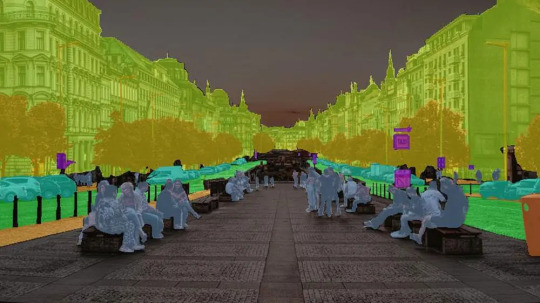
NextWealth's AI enables real-time 3D-Semantic segmentation with high-quality computer vision, recognizing and responding through machine learning for improved performance.
Read more :https://www.nextwealth.com/3d-semantic-segmentation-services/
0 notes
Photo

AI Powers Protein Folding Prediction.
Visit : https://www.datalabeler.com
Mail : [email protected]
#labeling in machine learning#machine Learning services#machine learning companies in usa#Machine learning services company#semantic segmentation services#semantic segmentation#image segmentation service
0 notes
Link
#Semantic Segmentation#computer vision technology#self-driving cars#semantic segmentation can automatically identify#MRI scans#applications in medical imaging#computer vision technique#understanding of an image by labeling every pixel#object detection models#pixel accuracy measures the percentage
0 notes
Text
Interesting Papers for Week 16, 2024
Signatures of cross-modal alignment in children’s early concepts. Aho, K., Roads, B. D., & Love, B. C. (2023). Proceedings of the National Academy of Sciences, 120(42), e2309688120.
Competing neural representations of choice shape evidence accumulation in humans. Bond, K., Rasero, J., Madan, R., Bahuguna, J., Rubin, J., & Verstynen, T. (2023). eLife, 12, e85223.
Initial conditions combine with sensory evidence to induce decision-related dynamics in premotor cortex. Boucher, P. O., Wang, T., Carceroni, L., Kane, G., Shenoy, K. V., & Chandrasekaran, C. (2023). Nature Communications, 14, 6510.
A large-scale neurocomputational model of spatial cognition integrating memory with vision. Burkhardt, M., Bergelt, J., Gönner, L., Dinkelbach, H. Ü., Beuth, F., Schwarz, A., … Hamker, F. H. (2023). Neural Networks, 167, 473–488.
Human thalamic low-frequency oscillations correlate with expected value and outcomes during reinforcement learning. Collomb-Clerc, A., Gueguen, M. C. M., Minotti, L., Kahane, P., Navarro, V., Bartolomei, F., … Bastin, J. (2023). Nature Communications, 14, 6534.
Large-scale recording of neuronal activity in freely-moving mice at cellular resolution. Das, A., Holden, S., Borovicka, J., Icardi, J., O’Niel, A., Chaklai, A., … Dana, H. (2023). Nature Communications, 14, 6399.
Top-down control of exogenous attentional selection is mediated by beta coherence in prefrontal cortex. Dubey, A., Markowitz, D. A., & Pesaran, B. (2023). Neuron, 111(20), 3321-3334.e5.
The priming effect of rewarding brain stimulation in rats depends on both the cost and strength of reward but survives blockade of D2‐like dopamine receptors. Evangelista, C., Mehrez, N., Boisvert, E. E., Brake, W. G., & Shizgal, P. (2023). European Journal of Neuroscience, 58(8), 3751–3784.
Different roles of response covariability and its attentional modulation in the sensory cortex and posterior parietal cortex. Jiang, Y., He, S., & Zhang, J. (2023). Proceedings of the National Academy of Sciences, 120(42), e2216942120.
Input-specific synaptic depression shapes temporal integration in mouse visual cortex. Li, J. Y., & Glickfeld, L. L. (2023). Neuron, 111(20), 3255-3269.e6.
Dynamic emotional states shape the episodic structure of memory. McClay, M., Sachs, M. E., & Clewett, D. (2023). Nature Communications, 14, 6533.
Trajectories through semantic spaces in schizophrenia and the relationship to ripple bursts. Nour, M. M., McNamee, D. C., Liu, Y., & Dolan, R. J. (2023). Proceedings of the National Academy of Sciences, 120(42), e2305290120.
Contribution of dorsal versus ventral hippocampus to the hierarchical modulation of goal‐directed actions in rats. Piquet, R., Faugère, A., & Parkes, S. L. (2023). European Journal of Neuroscience, 58(8), 3737–3750.
Neural dynamics underlying successful auditory short‐term memory performance. Pomper, U., Curetti, L. Z., & Chait, M. (2023). European Journal of Neuroscience, 58(8), 3859–3878.
Temporal disparity of action potentials triggered in axon initial segments and distal axons in the neocortex. Rózsa, M., Tóth, M., Oláh, G., Baka, J., Lákovics, R., Barzó, P., & Tamás, G. (2023). Science Advances, 9(41).
Working memory and attention in choice. Rustichini, A., Domenech, P., Civai, C., & DeYoung, C. G. (2023). PLOS ONE, 18(10), e0284127.
Acting on belief functions. Smith, N. J. J. (2023). Theory and Decision, 95(4), 575–621.
Thalamic nucleus reuniens coordinates prefrontal-hippocampal synchrony to suppress extinguished fear. Totty, M. S., Tuna, T., Ramanathan, K. R., Jin, J., Peters, S. E., & Maren, S. (2023). Nature Communications, 14, 6565.
Single basolateral amygdala neurons in macaques exhibit distinct connectional motifs with frontal cortex. Zeisler, Z. R., London, L., Janssen, W. G., Fredericks, J. M., Elorette, C., Fujimoto, A., … Rudebeck, P. H. (2023). Neuron, 111(20), 3307-3320.e5.
Predicting the attention of others. Ziman, K., Kimmel, S. C., Farrell, K. T., & Graziano, M. S. A. (2023). Proceedings of the National Academy of Sciences, 120(42), e2307584120.
#neuroscience#science#research#brain science#scientific publications#cognitive science#neurobiology#cognition#psychophysics#neurons#neural computation#neural networks#computational neuroscience
16 notes
·
View notes
